Today, the LEGO Group unveils the #31215 LEGO Art Vincent van Gogh – Sunflowers set. Created in close collaboration with the Van Gogh Museum in Amsterdam, the brick-built painting captures the iconic brushstrokes of Van Gogh’s masterpiece.
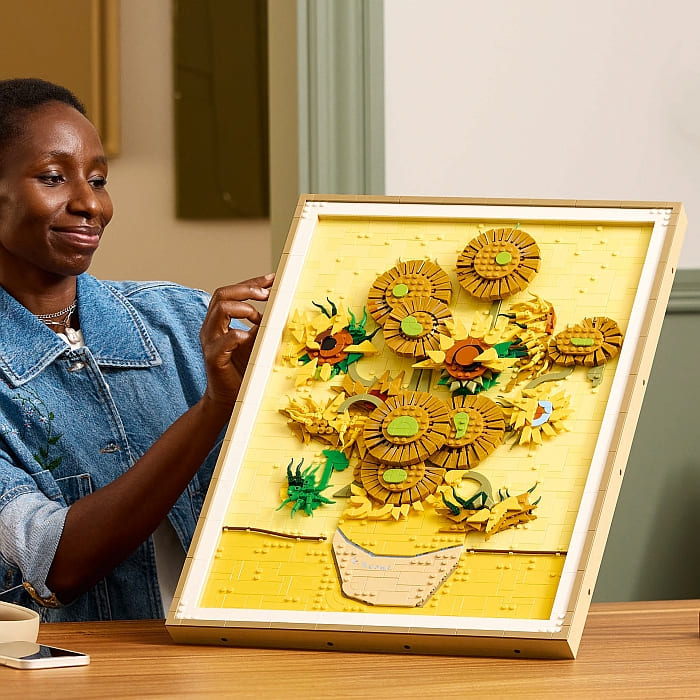
The 2,615-piece set enables fans to immerse themselves in Van Gogh’s art and to learn more about the inspiration behind one of his most beloved paintings: Sunflowers (1889). The set has been carefully designed to create a 3-D brick version focusing on the three radiant shades of yellow and Van Gogh’s famous use of light and shade. The set features the 16 sunflowers of the painting with adjustable petals, a removable frame, a tile with Van Gogh’s signature, and a hanger element to display.
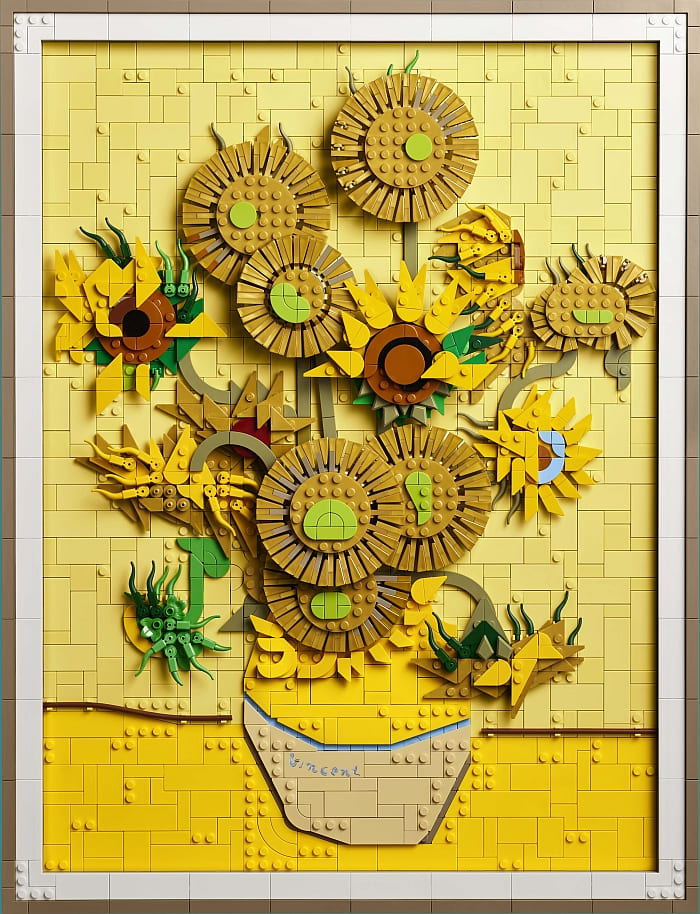
Imagine yourself as a painter in front of a blank canvas. Inspired by vibrant colors, the artwork is built by adding layers and layers of details until the #31215 LEGO Art Sunflowers comes to life. While building, you can listen to a podcast created together with the Van Gogh Museum, featuring Senior Curator Nienke Bakker and the LEGO Designer Stijn Oom, available from the 1st of March at LEGO.com, YouTube, and Spotify. The podcast touches on the collaboration between LEGO Group and the museum in the design process of the set and the story of how Vincent became known as the painter of sunflowers.
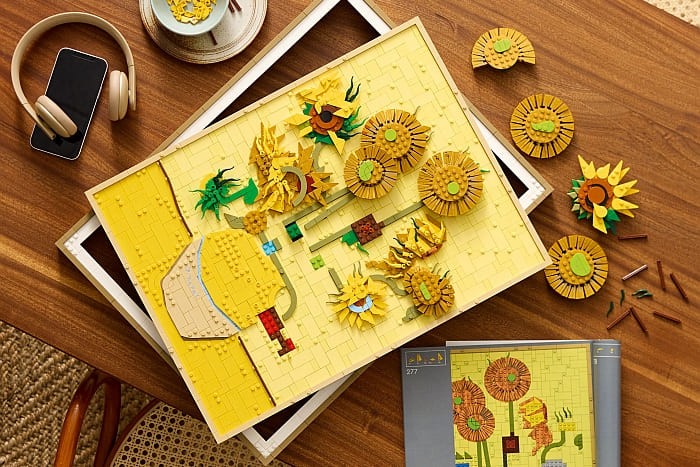
Regarding bringing Van Gogh’s work to life in LEGO bricks, LEGO Designer Stijn Oom said: “Working on one of the world’s most famous paintings can be quite daunting, but recreating Sunflowers has been a dream come true. We collaborated closely with the Van Gogh Museum and its experts, delving into the details to meticulously craft a 3-D version of the original artwork. One of the most challenging yet crucial aspects was translating the impasto effect into LEGO bricks while preserving the painting’s asymmetrical yet balanced composition. We are incredibly proud of the result and hope our fans enjoy building it as much as we enjoyed bringing Van Gogh’s masterpiece to life.”
Rob Groot, Managing Director of the Van Gogh Museum, is very excited that one of the most beloved paintings of the permanent collection is now captured in a LEGO set. “It was wonderful to see how the LEGO Group and the experts of our museum have collaborated with such attention to detail and appreciation for the original artwork. We hope this LEGO set will inspire and engage new audiences with the art and life story of Vincent van Gogh.”
Celebrating the launch of the product on the 1st of March, the LEGO Group has created two lifestyle brick replicas of the painting which will be permanently displayed in the LEGO Store, Amsterdam and the Van Gogh Museum from that date on. LEGO fans in Amsterdam and Marseille will be able to meet the LEGO set designer, Stijn Oom, and get their set signed at the LEGO Stores on the 1st of March and the 2nd of March respectively. Throughout this year, more fun activities will be organized in partnership with the Van Gogh Museum in Amsterdam. A brick-built LEGO installation will be on view in the museum from June to August 2025 and will later be housed at LEGO House Billund and LEGO World, Utrecht. To make this experience available to all, a virtual curated tour will be created with the Van Gogh Museum enabling LEGO enthusiasts worldwide to enjoy the installation from the comfort of their homes. Stay tuned for more information.
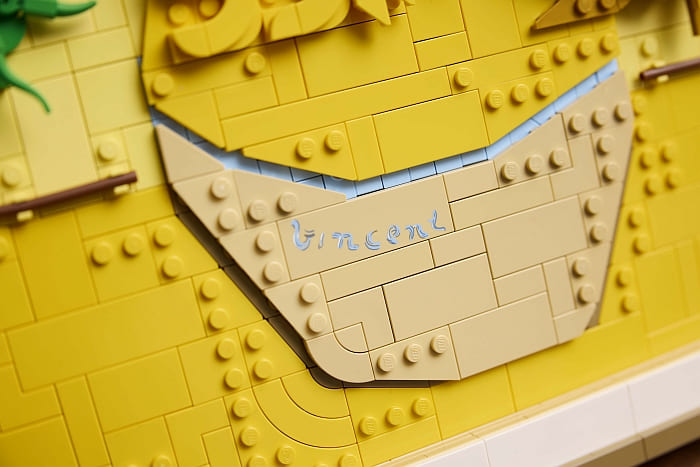
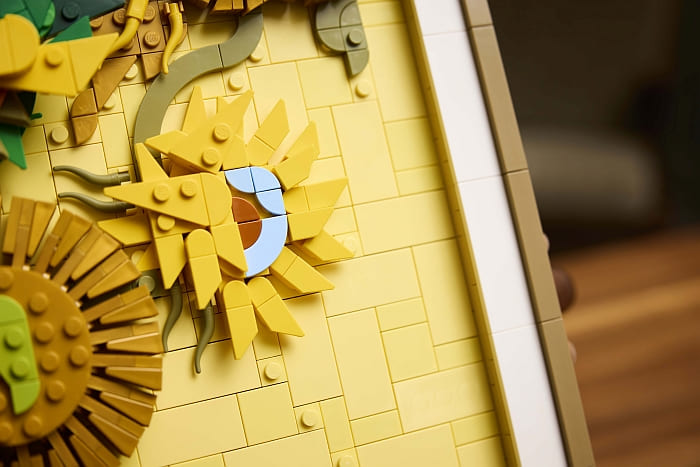
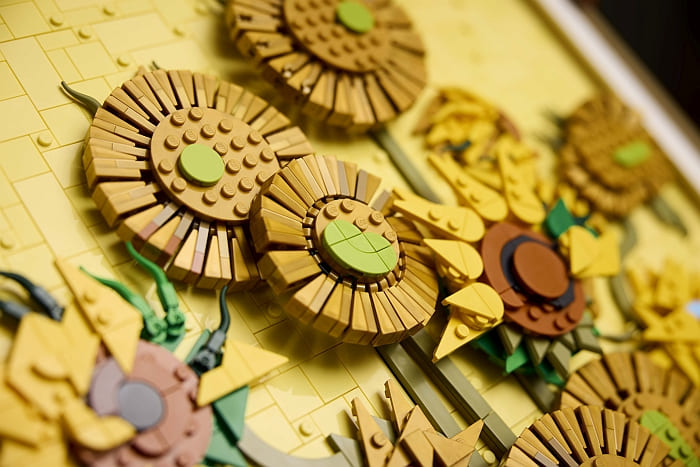
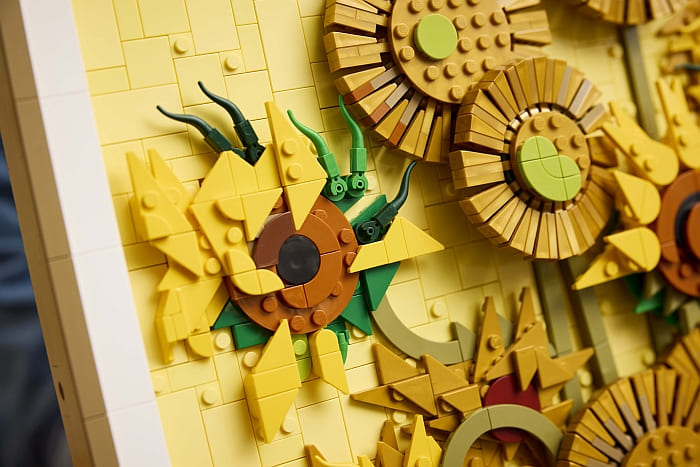
The Van Gogh Museum in Amsterdam, renowned for housing the world’s largest collection of Van Gogh’s works, proudly includes the version of the Sunflowers painting among its treasures. This iconic masterpiece, painted by Vincent van Gogh in 1889 during his time in Arles, France, captures the vibrant beauty and intricate detail of the sunflowers he so passionately depicted.
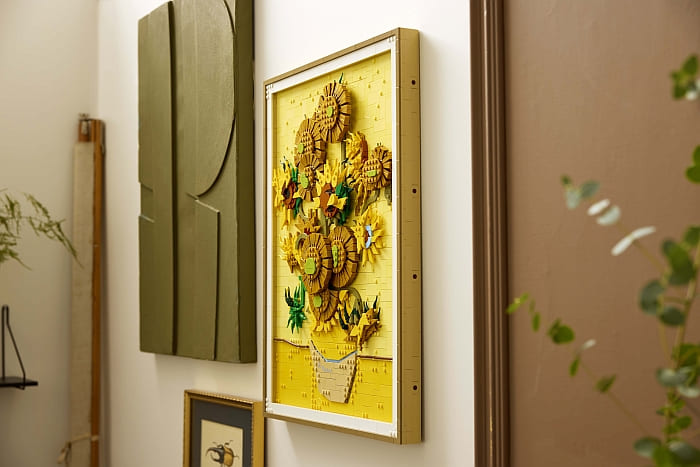
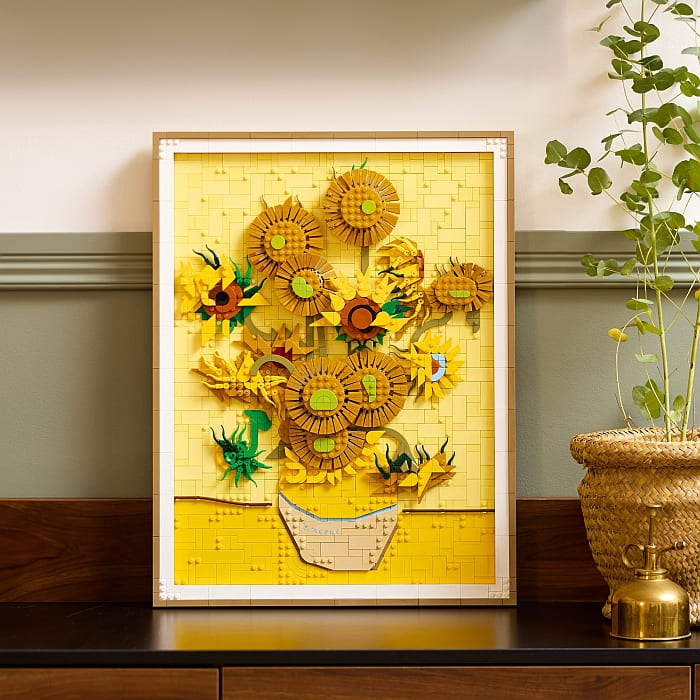
The #31215 LEGO Art Vincent van Gogh – Sunflowers set is available for pre-order starting today and will ship starting March 1st. Prices are as follows: € 199.99 / £169.99 / $ 199.99/299.99 AUD/82990 HUF/259.99 CAD/1999.99 BRL/4999 MXN. For more information, and to pre-order the set, visit the LEGO Art section of the Online LEGO Shop.

This is the second LEGO featuring Van Gogh’s work. The first set was the #21333 LEGO Ideas Vincent van Gogh – The Starry Night released in 2022. That set even included a minifig-version of the artist himself. What do you think? How do you like this new LEGO Art set? Feel free to share your thoughts and discuss in the comment section below!
And you might also like to check out the following related posts:
- LEGO Art Mona Lisa Review & Thoughts
- LEGO Mona Lisa and Notre-Dame Press-Release
- LEGO Art LOVE Available for Pre-Order
- LEGO Art World Map Mosaic Review
- Customizing the LEGO Art World Map Mosaic
- LEGO Art Hokusai – The Great Wave Mosaic Press-Release
- LEGO Art Elvis Presley & Batman Mosaics Overview
- LEGO Art Rolling Stones Mosaic
- LEGO Art Elvis Presley The King Mosaic
- LEGO Art Jim Lee Batman Collection
- LEGO Art Mosaics Alternate Building Instructions
- LEGO Art World Map Mosaic Review
- Customizing the LEGO Art World Map Mosaic
- More Alternate Instructions for LEGO Art Mosaics
- Building Custom LEGO Mosaics with LEGO Art Sets
- Brick Breakdown: LEGO Art Iron Man Mosaic
- LEGO Mosaic Maker Now Available Online
















